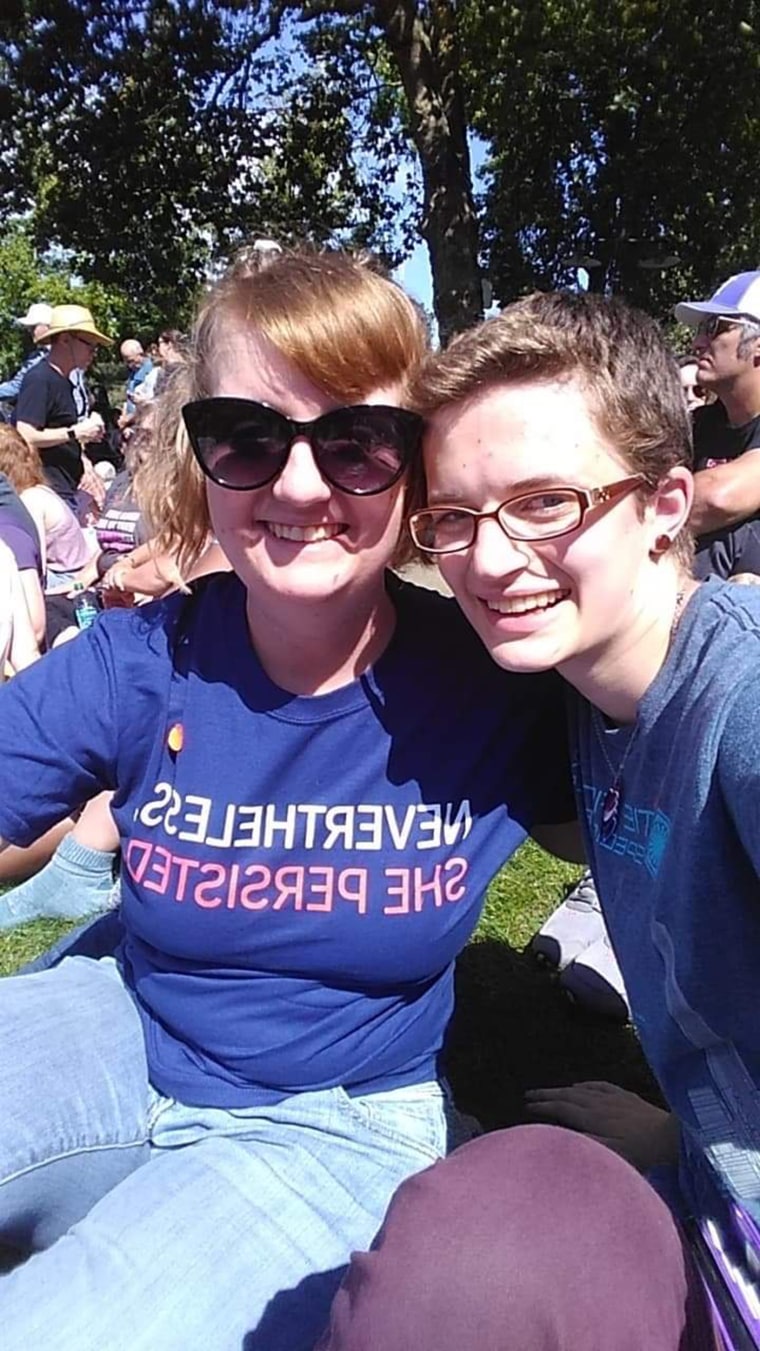This story discusses suicide. If you or someone you know is at risk of suicide please call the U.S. National Suicide Prevention Lifeline at 800-273-8255, text TALK to 741741 or go to SpeakingOfSuicide.com/resources for additional resources. Or contact The Trevor Project the world’s largest suicide prevention and crisis intervention for LGBTQ youth at 1-866-488-7386, www.TheTrevorProject.org/Help or by texting START to 678678.
When Ara Morgenstern was a freshman in high school, classmates and the rest of the community saw the teenager as a girl.
But Morgenstern identifies as gender fluid, fluctuating between feeling masculine and feminine and preferring the use of pronouns "they" and "them." Being gender fluid was a secret, something Morgenstern knew family and most friends in western Washington state wouldn't understand.
Overwhelming feelings of anger and bitterness led to isolation, self-harm and a suicide attempt. But a freshman English teacher was a brief ray of hope.

“She was very helpful throughout all of that,” Morgenstern, now a 19 year-old student at Evergreen State College in Washington, told TODAY. Still, it wasn't until until junior year that another English teacher was able to break through the teen's increasingly desperate cycle of self-harm.
“He pretty much wouldn’t leave me alone, which is what I needed,” Morgenstern said. “My emotional state as a whole improved. I guess just part of me saw him and saw how I wanted to be.”
Suicide among teens and young adults in the U.S. has reached record rates, but young LGBTQ people are even more vulnerable. An estimated 39% of LGBTQ youth have considered suicide in the past year, according to The Trevor Project’s 2019 national survey on youth mental health. More than half of transgender and non-binary youth have considered suicide.
Experts know that teachers and other school staff who are supportive of LGBTQ children can be life-saving. Yet, few schools’ suicide policies include guidance for at-risk students. That's why The Trevor Project, The American Foundation for Suicide Prevention, the American School Counselor Association, the National Association of School Psychologists collaborated on a new suicide prevention program, the Model School Policy.
Even as more states require mental health education by law, not many schools offer suicide prevention programs, according to Trevor Project spokesperson Sam Brinton. Released in September — National Suicide Prevention Month — the new program offers schools a road map for preventing suicide and responding to attempts. For example, if a student says she wants to die, the program suggests constant monitoring, plus connecting the student to other resources.
“It is really important that teachers know how to help,” Brinton, head of advocacy and government affairs at The Trevor Project, told TODAY. “This is a resource that will help them save lives."
The group provides crisis intervention for young people and their families or loved ones and can also help parents and school staff understand how to address LGBTQ people's mental health in an affirming way through training and community resources.
“I honestly don’t think I would have made it through high school," Morgenstern said about the English teachers. "I don’t think I would have made it to my 18th birthday.”
Brinton, who identifies as non-binary and also struggled with suicidal attempts and thoughts while a student, believes a policy for LGBTQ students would have helped make high school a healthier and safer experience. But Brinton's school had no policy for helping students contemplating suicide.
“I didn’t know where to go,” Brinton said. “I truly believe that if there had been a school policy, I would know who to talk to about my feelings of suicidal ideation.”
Brinton urged parents and students to talk to their school about suicide policies.
“I do think it is important for people to realize they should ask their school district what their policy is and if they include prevention, intervention and postvention,” Brinton said.
Morgenstern now works as an activist, helping other LGBTQ youth facing similar struggles. Now a college student, Morgenstern stays in touch with the high school English teacher who offered so much emotional support.
“He is always there when I hit a rough spot and sometimes just for fun,” Morgenstern said. “He’s so proud [of me] and it feels really good.”
